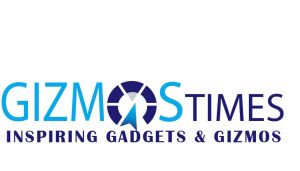Content
The onboarding process is often underestimated, and the biggest mistake you can make with remote workers is letting them handle it on their own. By taking the above-mentioned steps, you can ease their challenges and make them feel valued and welcome members of your team. During such meetings, you can go over anything from your pets to your agency timesheets and check whether they bring proper productivity into the team. Once a buddy is assigned, schedule a meeting on day one and regular check-ins throughout the first month of remote onboarding. Otherwise, give the buddy and the new hire the freedom to meet as they choose to encourage an authentic connection that doesn’t feel forced.
- This can take some time, so it’s a good idea to send invites and video conferencing links to the new hire’s personal email account.
- However, for new employees, remote onboarding and digital onboarding can be challenging.
- Remember that onboarding remote employees is different from traditional onboarding.
- Let’s observe a few common challenges and the ways to handle them.
- A mention during a group video call goes a long way but you could also get creative with automated Slack messaging and delivering gifts.
Let your new remote worker highlight areas they still have questions about, so you can make sure everything has been covered thoroughly. Look beyond your human resources departments and your usual training. Everyone in your company has skills and expertise, and they’ll be more than excited to share their knowledge with the new team member. https://remotemode.net/ You can also consider investing in a remote training software that can help to fill in the cracks and provide a good record of what steps your training requires. Use Assembly to get new employees in on your company’s recognition program. Just visiting the friendly, intuitive platform will help new employees feel like part of the team.
How Long Should Remote Onboarding Take?
Send first-day calendar invites to the new hire’s personal email, in addition to their work email. For remote employees, the first day is all about getting access remote onboarding best practices to essential systems. This can take some time, so it’s a good idea to send invites and video conferencing links to the new hire’s personal email account.
- This allows both sides to share their screens and highlight what was done well and what could be improved.
- When onboarding remote employees, though, the cracks would show quickly.
- This is a key element of remote work positions as employees usually need to register and access a host of different communication, productivity, and other workplace tools.
- This may be especially true if you were starting a new job in the ambiguity of a virtual environment.
- We have some virtual documents, but the onboarding user experience could use some work.
Nurturing your best talent from the very start will make them feel important and valued, setting the stage for high satisfaction and a feeling of belonging. These are great habits to get into, and tasks to delegate, to engage existing team members, and encourage them to extend support, too. Followup is important; a simple check-in or 5-minute chat is sometimes all a person needs if they are working from home and at risk of feeling isolated. For instance, if you use a collaborative tool like Slack, you could create one or more channels dedicated specifically to training and productivity topics. You may want to designate someone to run each of these channels and keep them active. The idea here is not to push people to divulge personal health information but to encourage and support work-life balance as people adjust to working from home.
Phase 3: Early Onboarding for Remote Employees
They won’t be able to contribute that much at first, but it’s good for them to see what happens on these calls, and to start getting a feel for their team members and the team’s regular patterns. This goes for any social calls too, if they’re regularly scheduled. We use Trello for our onboarding processes at Hotjar, but Asana or otherteam collaboration toolscould work just as well, depending on what your company has or what you’re already used to. Your communications with a new remote team member leading up to their first day are an opportunity for you to introduce your company’s culture and values. Pre-boarding is everything that takes place from the moment of hiring to when a new employee starts their first day on the job. At this stage, your main task is to get this person acquainted with your company and its corporate culture, as well as to make your collaboration feel comfortable right from the start. It doesn’t matter if the assigned buddy works remote or on-site, as long as they are a willing participant and have time in their schedule .
How would you onboard a remote employee?
Onboard a remote employee by catering your standard onboarding processes to accommodate unique remote needs. Keep the process focused and successful by using a checklist to make sure you’re reaching key goals in every step of the process.
These 10 roles, with different responsibilities, are commonly a part of the data management teams that organizations rely on to … Great Place To Work Certification™ helps your company attract and retain top workers. Employees at Certified companies are 60% more likely to help their employers recruit talent and 51% more likely to stay for a long time, when compared to non-Certified companies.
Building strong culture and relationships
For those that rely on shared workspaces and childcare centres that are now closed or normally work in an office, impromptu home setups have become the norm and come with a new set of challenges. According to research, 72% of new workers consider one-on-one meetings with their direct managers to be the most significant part of the onboarding process!



